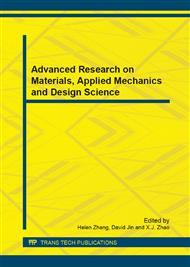p.177
p.181
p.185
p.189
p.193
p.197
p.201
p.207
p.211
Study on Building Wall Materials System by Using Association Rule Mining
Abstract:
Association rule mining is to find interesting associations between itemsets in large amounts of data or related links. The new wall materials are mainly concrete, cement or fly ash, coal gangue and other industrial waste and household garbage produced by the non-clay brick, building blocks and building boards and construction techniques, materials, technology, detection means there is no specification limit. This paper presents the using association rule mining to build the building wall materials system. Experimental data sets prove that the proposed algorithm is effective and reasonable.
Info:
Periodical:
Pages:
193-196
Citation:
Online since:
June 2013
Authors:
Price:
Сopyright:
© 2013 Trans Tech Publications Ltd. All Rights Reserved
Share:
Citation:


